Abstract
The morphological changes produced by four series of organic trypanocidal drugs have been studied by quantitative and by qualitative methods using phase-contrast and fluorescence microscopy. Basic drugs were absorbed rapidly into the region of the kinetoplast; acidic drugs did not affect this region. Faint granules, which were present in some trypanosomes before the administration of drugs, absorbed the drugs and increased in contrast relative to the cytoplasm. Hydroxystilbamidine, quinapyramine, related compounds, and possibly also suramin produced additional granules which did not contain drug. These additional granules are similar to the granules (volutin granules) which occur in trypanosome infections (not treated with drugs) when trypanosomes are about to be cleared from the blood. Homidium did not produce additional granules.
Full text
PDF
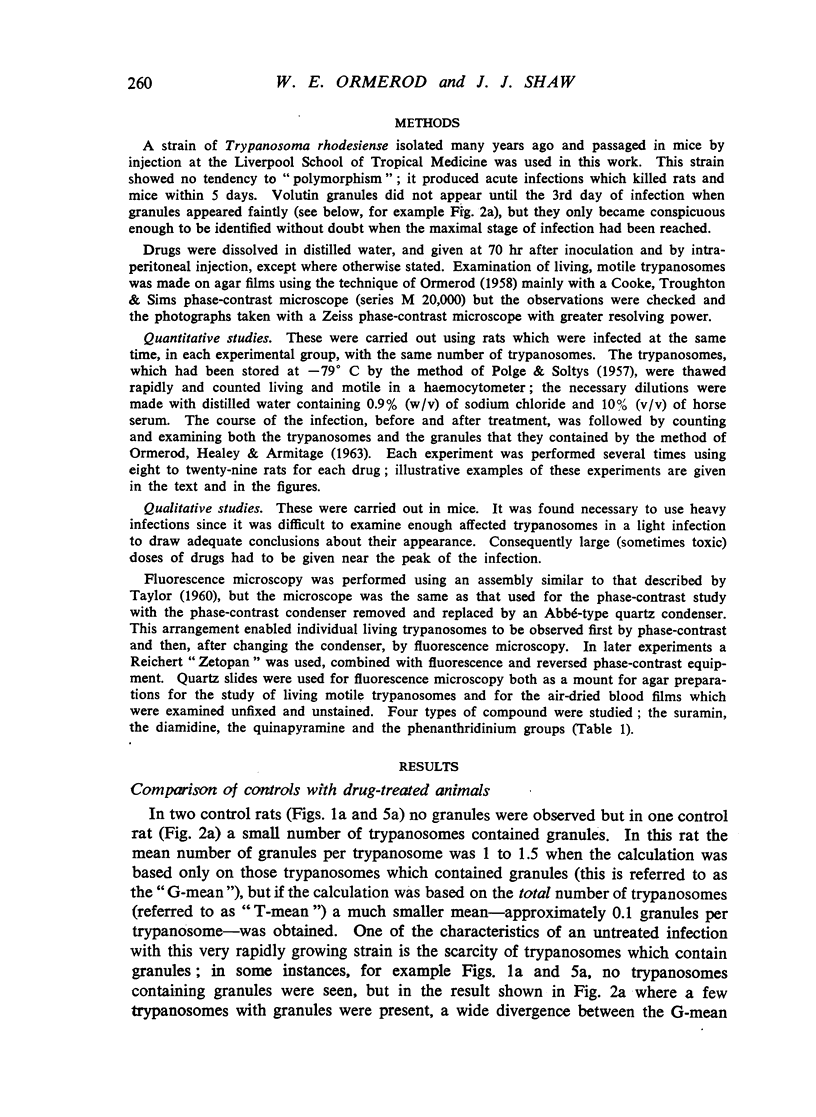

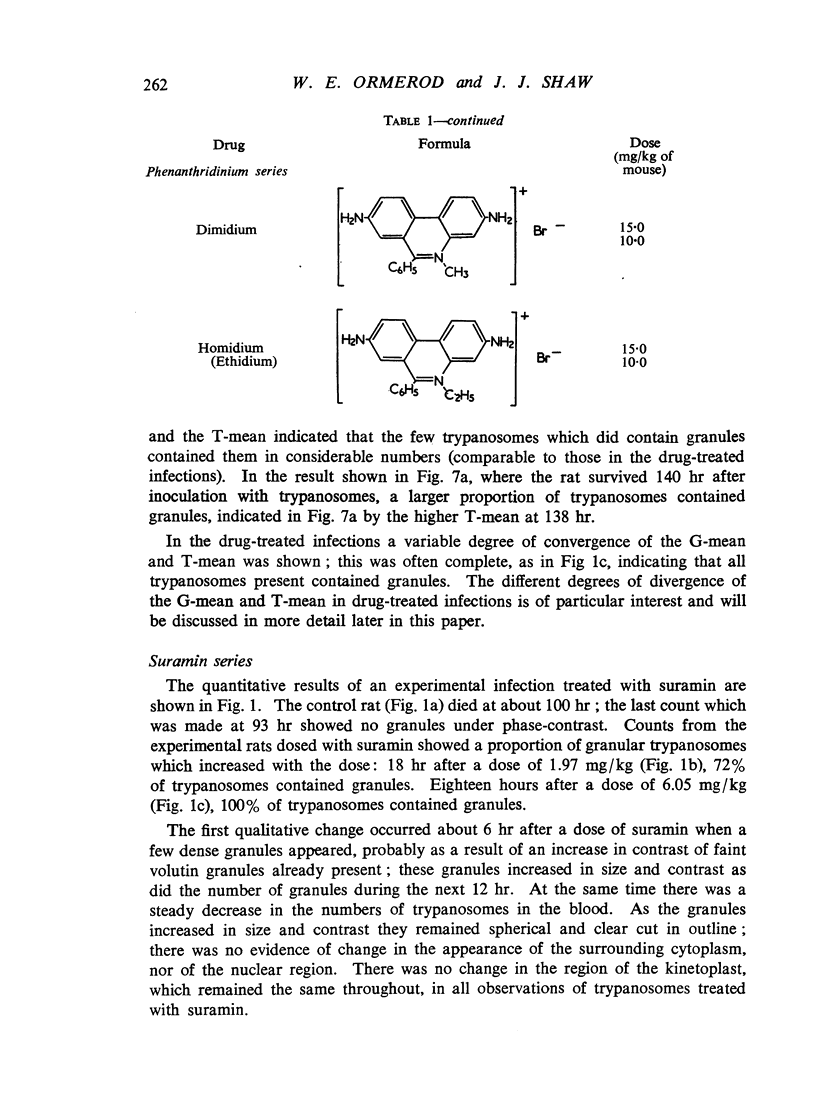

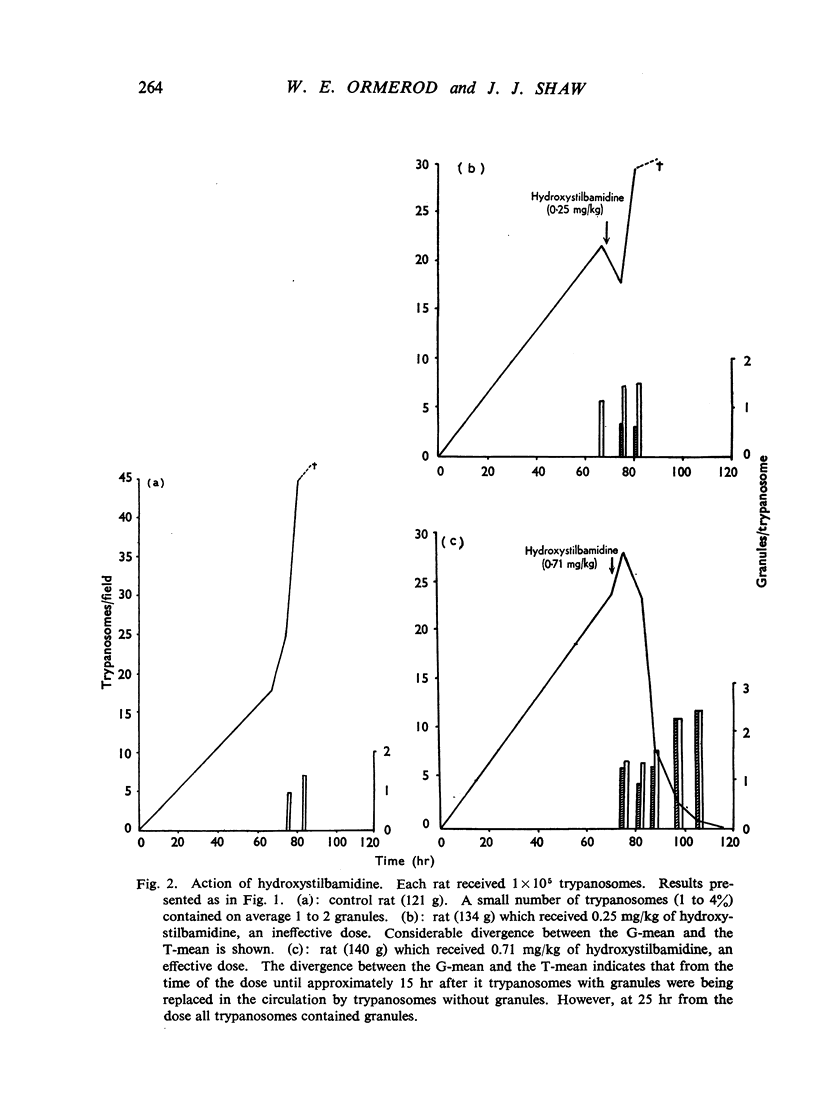
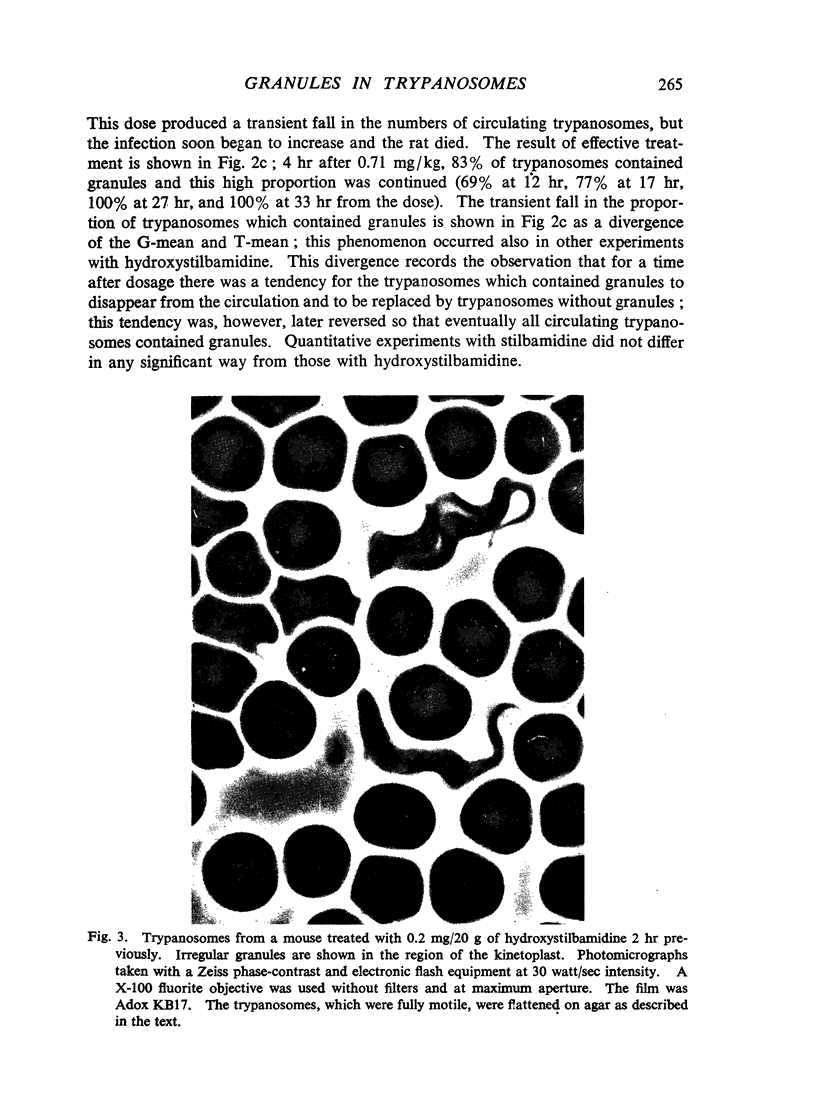

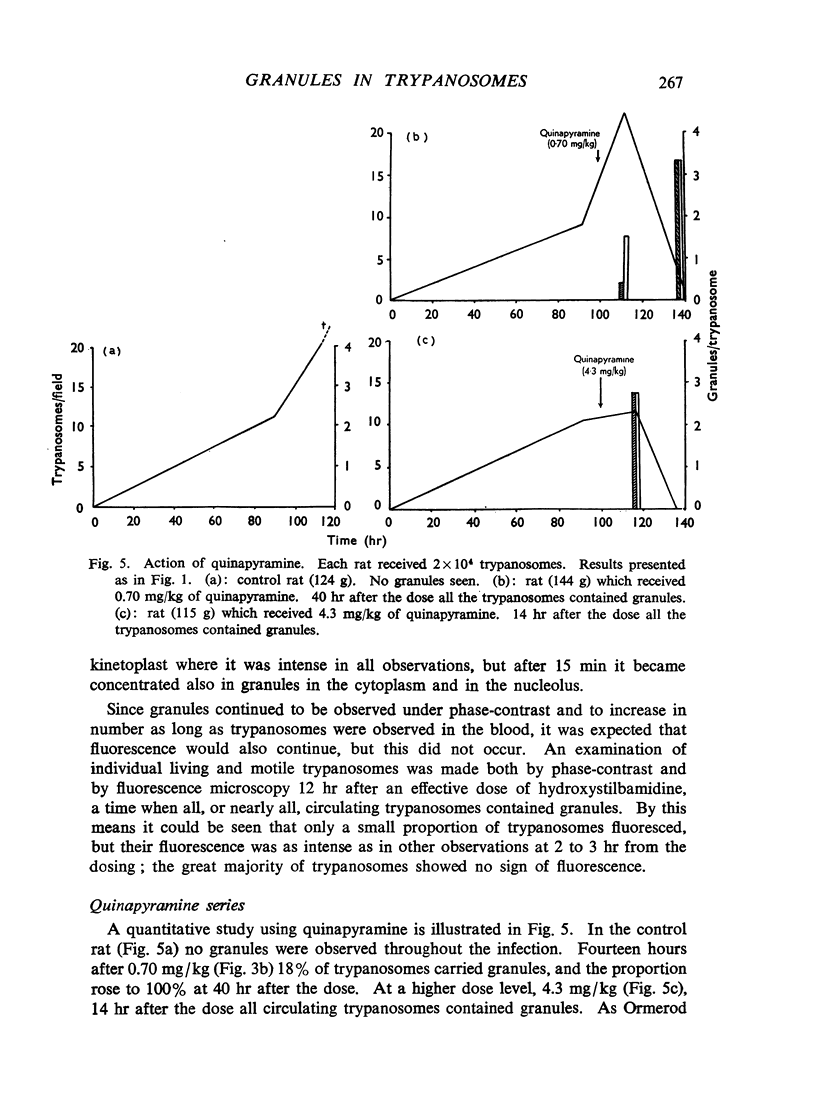





Images in this article
Selected References
These references are in PubMed. This may not be the complete list of references from this article.
- BAKER J. R. The distribution of nucleic acids in Trypanosoma evansi. Trans R Soc Trop Med Hyg. 1961 Nov;55:518–524. doi: 10.1016/0035-9203(61)90074-8. [DOI] [PubMed] [Google Scholar]
- FULTON J. D., GRANT P. T. Experiments on the mode of action of stilbamidine. Ann Trop Med Parasitol. 1956 Dec;50(4):381–384. doi: 10.1080/00034983.1956.11685780. [DOI] [PubMed] [Google Scholar]
- HAWKING F., SEN A. B. The trypanocidal action of homidium, quinapyramine and suramin. Br J Pharmacol Chemother. 1960 Dec;15:567–570. doi: 10.1111/j.1476-5381.1960.tb00283.x. [DOI] [PMC free article] [PubMed] [Google Scholar]
- ORMEROD W. E. A comparative study of cytoplasmic inclusions (volutin granules) in different species of trypanosomes. J Gen Microbiol. 1958 Oct;19(2):271–288. doi: 10.1099/00221287-19-2-271. [DOI] [PubMed] [Google Scholar]
- ORMEROD W. E. A study of basophilic inclusion bodies produced by chemotherapeutic agents in trypanosomes. Br J Pharmacol Chemother. 1951 Jun;6(2):334–341. doi: 10.1111/j.1476-5381.1951.tb00647.x. [DOI] [PMC free article] [PubMed] [Google Scholar]
- ORMEROD W. E. A study of resistance to antrycide in a strain of Trypanosoma equiperdum. Br J Pharmacol Chemother. 1952 Dec;7(4):674–684. doi: 10.1111/j.1476-5381.1952.tb00737.x. [DOI] [PMC free article] [PubMed] [Google Scholar]
- ORMEROD W. E. The mode of action of antrycide. Br J Pharmacol Chemother. 1951 Jun;6(2):325–333. doi: 10.1111/j.1476-5381.1951.tb00646.x. [DOI] [PMC free article] [PubMed] [Google Scholar]
- ORMEROD W. E. The study of volutin granules in trypanosomes. Trans R Soc Trop Med Hyg. 1961 Jul;55:313–332. doi: 10.1016/0035-9203(61)90100-6. [DOI] [PubMed] [Google Scholar]
- POLGE C., SOLTYS M. A. Preservation of trypanosomes in the frozen state. Trans R Soc Trop Med Hyg. 1957 Nov;51(6):519–526. doi: 10.1016/0035-9203(57)90041-x. [DOI] [PubMed] [Google Scholar]
- SPINKS A. Absorption and persistence of antrycide. Br J Pharmacol Chemother. 1950 Sep;5(3):445–454. doi: 10.1111/j.1476-5381.1950.tb00595.x. [DOI] [PMC free article] [PubMed] [Google Scholar]
- TAYLOR A. E. The absorption of prothidium by Trypanosoma rhodesiense. Br J Pharmacol Chemother. 1960 Jun;15:230–234. doi: 10.1111/j.1476-5381.1960.tb01236.x. [DOI] [PMC free article] [PubMed] [Google Scholar]





